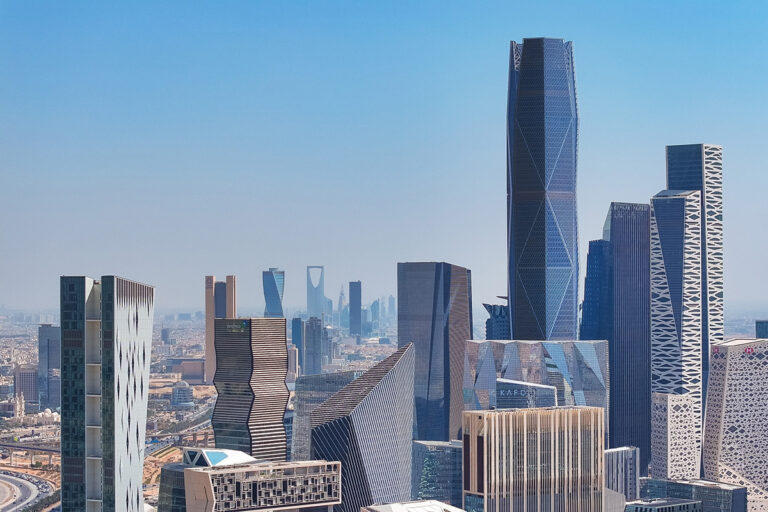Last month, the Saudi government approved the highly anticipated foreign ownership law for real estate investors. It is expected to take effect in January 2026.
The early wave of international buyers consists primarily of wealthy individuals and family offices with religious, cultural, or business ties to Saudi Arabia, attracted by luxury developments in Riyadh and Jeddah and the prospect of owning property in the holy cities of Makkah and Medina.
The investor influx comes as Saudi Arabia implements sweeping reforms allowing foreign ownership of residential property for the first time, requiring a minimum investment of SAR 4 million ($1.07 million). More than 40,000 applications for Premium Residency permits have been received in just 18 months, with 8,074 permits issued in 2024 alone.
“Saudi Arabia is inspired by the Dubai and Abu Dhabi playbook. They are combining major policy reforms with massive real estate development,” Kashif Ansari, co-founder and Group CEO of property portal Juwai IQI, told Arabian Business.
“With new laws allowing foreign ownership, a pipeline of ultra-modern projects like NEOM and The Red Sea, and a significant pricing advantage, we think the Kingdom will emerge alongside its neighbours as a major destination for real estate investment.”
The Kingdom expanded its Premium Residency program from two to seven categories last year, including options for exceptional competence, talent, business investors, entrepreneurs, and real estate owners. The largest share of permits – 5,578 – went to the “exceptional competence” category, followed by 348 “talent” permits.
Regional ambitions
Dubai’s success as a foreign property investment destination has generated $121 billion in foreign-owned property, while Abu Dhabi attracts $1 billion in new inbound investment every six months, providing a roadmap Saudi Arabia aims to replicate with its larger economy and more abundant land.
“There has been a visible uptick in international enquiries, especially from buyers in Greater China, Southeast Asia, and the broader Islamic world,” Ansari said, noting strong appetite among Muslim buyers seeking properties in Makkah and Medina.
Foreign residential investment is expected to reach $1.22 billion this year, nearly double the SAR 2.5 billion ($670 million) in net commercial real estate foreign direct investment recorded in 2023, Ansari said. Riyadh and Jeddah are the primary targets for international buyers, along with flagship developments like Diriyah Gate and Laheq Island.
Property prices in major cities remain attractive compared to regional competitors, with projects in Riyadh and Jeddah priced at approximately $123 and $100 per square foot respectively. The luxury and upper mid-market segments are seeing the strongest activity from individual buyers.
The Premium Residency program offers substantial benefits to foreign investors, including permanent or time-limited residency for families, visa-free entry and exit, exemption from expatriate levies, and the ability to work in the private sector without sponsorship. Notably, residents can obtain usufruct rights to properties in the holy cities of Makkah and Medina for up to 99 years.
Challenges remain
However, challenges remain in fully opening the market.
“Buyers still seek clarity on mortgage availability, registration procedures, repatriation of funds, financing, legal protections, and new paths to residency,” Ansari noted, adding that Saudi Arabia will likely need to introduce more accessible visa options to unlock broader foreign demand beyond ultra-high-net-worth individuals.
The property market opening aligns with Saudi Arabia’s Vision 2030 economic diversification strategy, which aims to raise homeownership among Saudi citizens to 70 per cent while attracting foreign investment. According to Ansari, both goals are compatible.
“By concentrating on foreign ownership in designated zones and by letting it gradually increase, the government can protect affordability in neighbourhoods for locals.”
The early wave of foreign buyers consists primarily of high-net-worth individuals and family offices with religious, cultural, or business ties to Saudi Arabia. Many are seeking early access to a market expected to see significant development, diversification opportunities, and premium lifestyle offerings.
Looking ahead, luxury residential and branded community developments offer the highest potential returns over the next five years. Mega-projects like NEOM – a futuristic city being built in the northwest – and The Red Sea development could yield substantial capital appreciation as they near completion.
However, risks include potential construction delays, policy implementation challenges, and global economic volatility. “The Kingdom must maintain investor confidence with consistent rules and steady progress towards opening for investment,” Ansari warned.
Saudi Arabia’s strategy includes leveraging major international events to showcase its economic potential. The Kingdom’s significant investment in sports, intended to contribute 10 per cent of GDP by 2030, is expected to attract “sports tourists” who may eventually become property buyers.
Rather than competing directly with the UAE, Saudi Arabia is positioning itself as complementary to the regional market. “Each Gulf market has its own unique appeal, and together they create a critical mass of opportunity, confidence, and infrastructure that makes the entire region more attractive to global investors,” Ansari explained.
The Kingdom ranks third among G20 nations in security indicators and aims to place three Saudi cities among the world’s top 100 places to live, further enhancing its appeal to international residents and investors.

